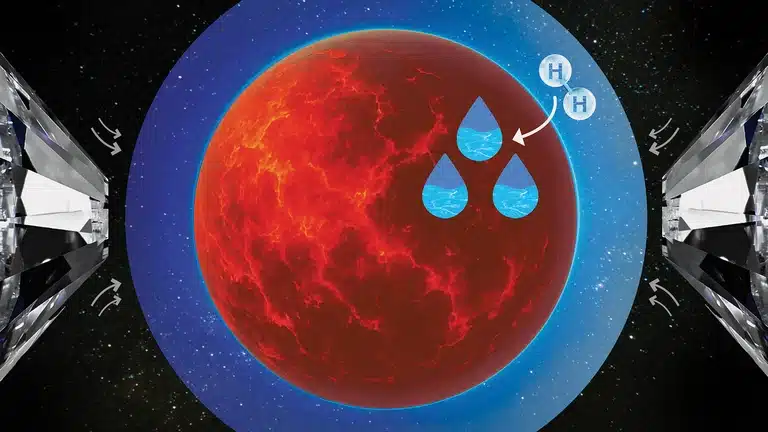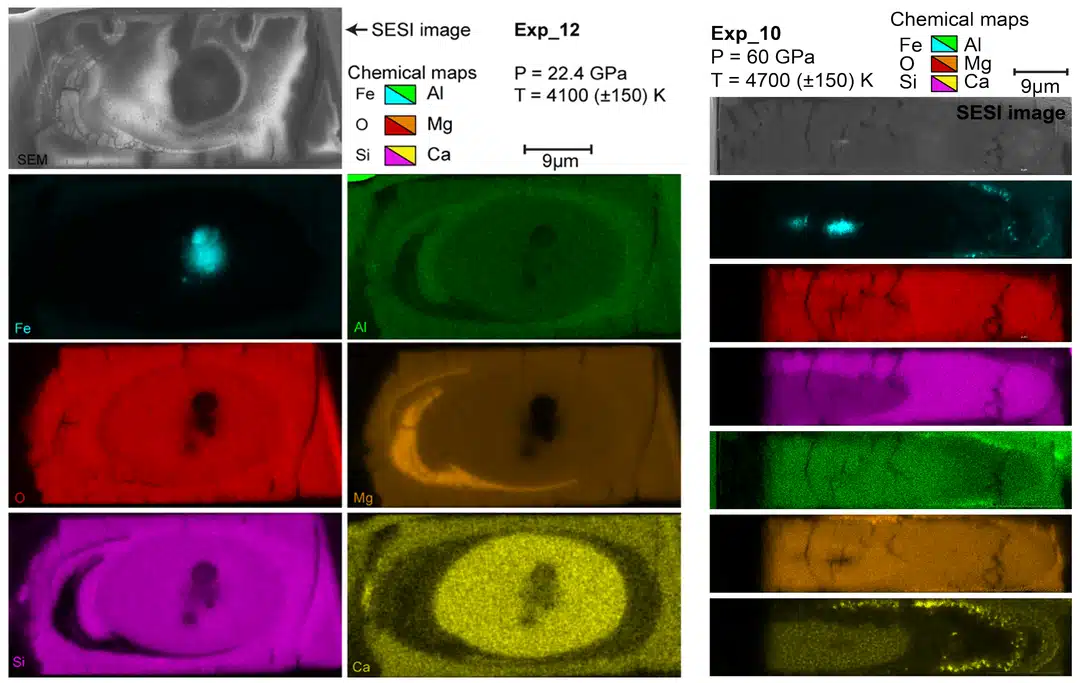In the early chaos of planetary formation, before crusts cooled or atmospheres settled, water might already have been bubbling into existence. Not from icy comets or far-flung asteroids, but from the blistering union of magma and hydrogen gas.
That’s the picture emerging from a new study led by Carnegie Science researchers, who’ve managed to reproduce the extreme conditions of young rocky planets in a lab. Their results suggest that planets may be able to make their own water, deep down, right from the start.
Planetary scientists have toyed with it for years, but until now, no one had solid experimental proof. This time, they didn’t just model it. They made it happen.
Lab-built Planets And A Decades-old Mystery
To recreate what happens inside a newborn planet, scientists combined a molten, iron-rich silicate melt, a stand-in for a magma ocean, with molecular hydrogen. That hydrogen represents the thick, gassy atmospheres that tend to wrap around young rocky planets, especially those forming in gas-rich disks.
Samples were squeezed to nearly 60 gigapascals (for reference, that’s about 600,000 times Earth’s surface pressure) and heated beyond 4,000°C. According to Earth.com, these intense conditions mimic the deep interiors of still-molten planets wrapped in thick hydrogen envelopes.
And the chemistry checked out. Hydrogen was absorbed into the molten material, and water was created through reactions between the hydrogen and iron oxides in the melt.
“We showed that a copious amount of hydrogen is dissolved into the melt and significant quantities of water are created,” said lead researcher Francesca Miozzi.
The experiments were carried out under the AEThER project, a collaborative effort bringing together astronomers, petrologists, cosmochemists, and mineral physicists to answer some deceptively simple questions about what makes a planet habitable.
 New laboratory research reveals that water can form naturally as planets take shape, without needing external sources. Credit: Navid Marvi/Carnegie Science
New laboratory research reveals that water can form naturally as planets take shape, without needing external sources. Credit: Navid Marvi/Carnegie Science
Water From Within—Not Delivered
The findings offer a new explanation for something scientists have puzzled over for decades: where Earth’s water actually came from. The popular theories, like water arriving via comets or being trapped in the mantle, don’t fully account for all of it. Now, there’s another possibility: maybe it formed right here, during Earth’s infancy.
According to the AEThER team, it could apply to any rocky planet that begins life wrapped in a hydrogen-rich atmosphere and swimming in the liquid rock. That setup, it turns out, is far from rare.
Hydrogen doesn’t just make water in this scenario, it also changes how the planet evolves. It affects the density of the molten material, how it cools, and how its core separates from the mantle. All of that, in turn, can shape what kind of atmosphere the planet ends up with, or if it keeps one at all. Anat Shahar, co-lead on the project, emphasized the bigger picture:
“This work demonstrates that large quantities of water are created as a natural consequence of planet formation.” It’s not just a one-off mechanism, it’s potentially foundational.
 Composite chemical maps from two samples: left shows a lower-pressure example, right shows a higher-pressure one. Credit: Nature
Composite chemical maps from two samples: left shows a lower-pressure example, right shows a higher-pressure one. Credit: Nature
The Hidden Oceans Of Distant Worlds
Now, zoom out to the galaxy. The most common type of planet in the Milky Way? Sub-Neptunes, rocky worlds with thick hydrogen atmospheres early in their lives. According to Earth.com, those are precisely the kinds of planets this chemistry could affect.
If their hydrogen atmospheres are later blasted away by starlight, what’s left could be a smaller, water-bearing super-Earth. And the water? Already waiting inside, formed long ago in a molten ocean. This perspective might change how astronomers interpret exoplanet data. A planet that looks dry or lifeless today could have a deeply watery past, hidden below the surface or locked in minerals.

